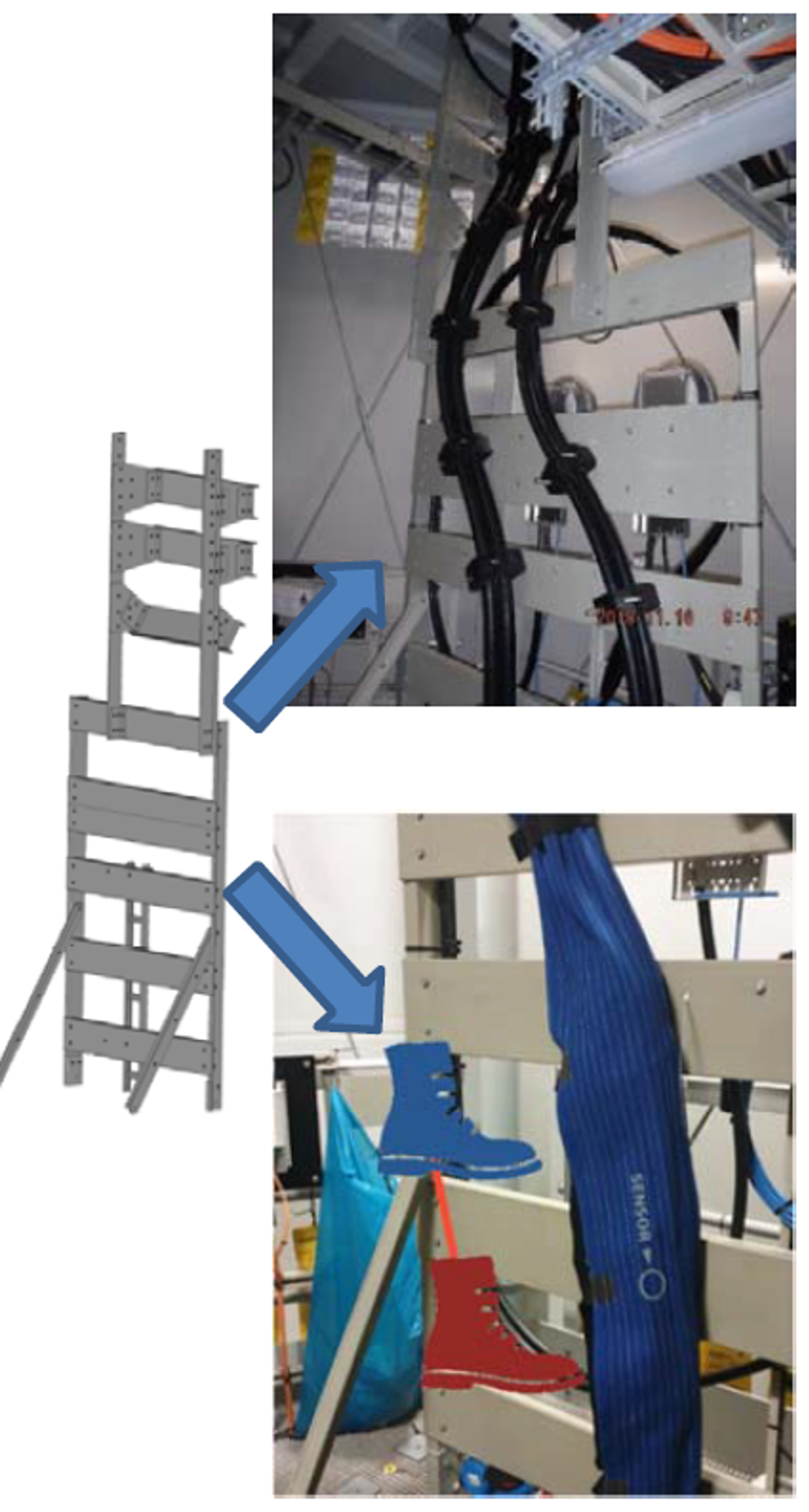Sprained ankle whilst climbing on equipment
- Safety Flash
- Published on 5 July 2019
- Generated on 10 January 2026
- IMCA SF 16/19
- 2 minute read
Jump to:
A crewman slipped and sprained his ankle climbing off equipment on which he had been working
What happened?
The incident occurred inside a transition piece (the lower part of an offshore wind turbine tower).
A crewman was climbing down off a cable rack (on which he had climbed to loosen cable cleats and apply a heat blanket) when he slipped off and twisted his ankle, loosing balance and falling onto the floor.
He managed to walk back to the vessel over the walk-to-work (W2W) gangway on his own, and suffered no fractures; however, he sprained his ankle, restricting him from normal duties for three days.

What were the causes?
- The cable rack was not designed to be climbed on; the spacing between rungs varies and does not follow the standard for fixed ladders.
- Access to the work location on top of the cable rack was not addressed in the risk assessment and the related procedure.
- Inadequate mitigations implemented; the narrow workspace in the transition piece does not allow the use of stepladders and work platforms.
What lessons were learned?
- Identify hazards at design stage to ensure that safe access can be achieved.
- Before starting work, safe access to any site should be established. If this can’t be achieved, then STOP the job and report the issue to your Supervisor.
- Ladders and platforms – safe and appropriate to the conditions should be used and working at height processes should be followed.
Related Safety Flashes
-
IMCA SF 02/14
20 February 2014
-
IMCA SF 02/10
8 April 2010
-
IMCA SF 07/13
9 May 2013
IMCA Safety Flashes summarise key safety matters and incidents, allowing lessons to be more easily learnt for the benefit of the entire offshore industry.
The effectiveness of the IMCA Safety Flash system depends on the industry sharing information and so avoiding repeat incidents. Incidents are classified according to IOGP's Life Saving Rules.
All information is anonymised or sanitised, as appropriate, and warnings for graphic content included where possible.
IMCA makes every effort to ensure both the accuracy and reliability of the information shared, but is not be liable for any guidance and/or recommendation and/or statement herein contained.
The information contained in this document does not fulfil or replace any individual's or Member's legal, regulatory or other duties or obligations in respect of their operations. Individuals and Members remain solely responsible for the safe, lawful and proper conduct of their operations.
Share your safety incidents with IMCA online. Sign-up to receive Safety Flashes straight to your email.